
At this time of year in the nursery, we are busy shifting plants into larger containers as they outgrow their pots and become pot-bound. When this happens, you can see the roots circling the pots. If those roots continue to circle, they can girdle the tree in the long run which results in poor tree health and even death. We remove those circling roots before moving them to a larger pot.
Because girdling roots are a problem, in the past nursery growers utilized copper-coated pots. The copper has the effect of killing the root tip when it touches the pot which prevents the circling. Manufacturers are now creating pots that have a similar effect without having to use copper. These pots are called root pruning pots. There is a variety of them available from various manufacturers and they come in various styles. Some are more effective than others. The principle in action is that when a root tip is exposed to air and dries, that tip dies. This doesn’t kill the plant, it is like pruning it. Root branching will occur behind the tip that has dried out. This ‘air’ pruning helps prevent the circling roots. Most of these pots guide the root to the openings that will expose them to the air.
Here are some examples of pots used at HF&G’s nursery:
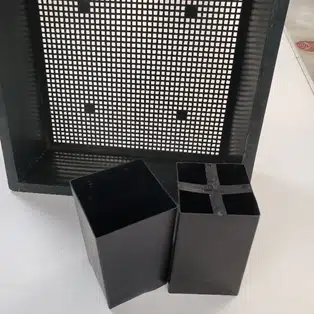
Tree bands (Figure 1) are designed with a mostly open bottom so as the roots grow downward and reach the bottom they will dry out. However, it is essential to have airflow below the pot, or else the high humidity will keep the root tip alive, and the root grows out of the pot and into the ground. They are placed in special mesh bottomed flats that help keep the soil from falling out while still allowing for air circulation.
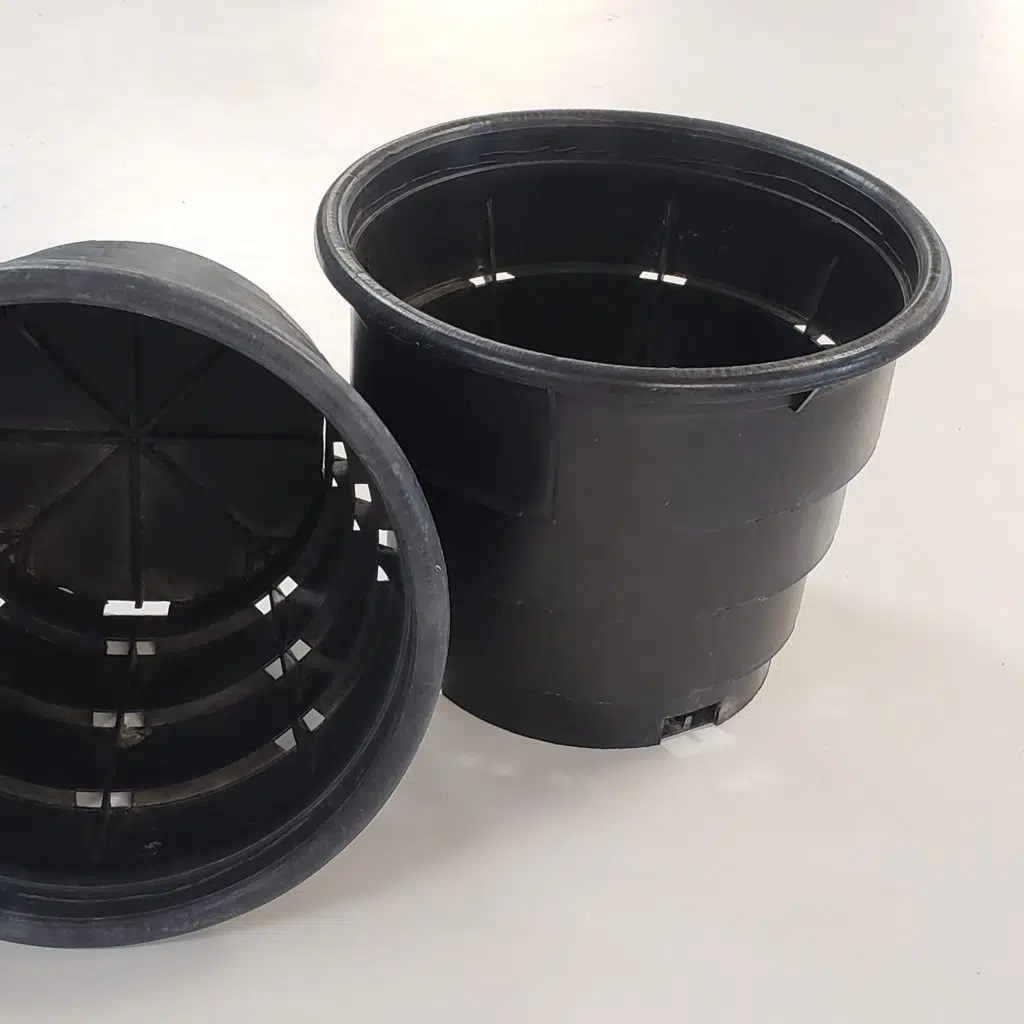
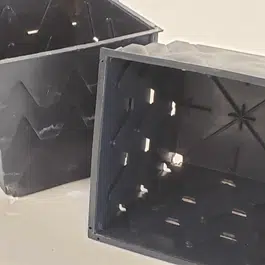
Rootmaker pots come in round (Figure 2) or square (Figure 3) configurations. The ‘V’ shaped patterns in the square pots direct the roots to the point of the ‘V’ where there is an opening, and the root tip is exposed to the air. The round pots have openings around the circumference at each level where it steps inward.
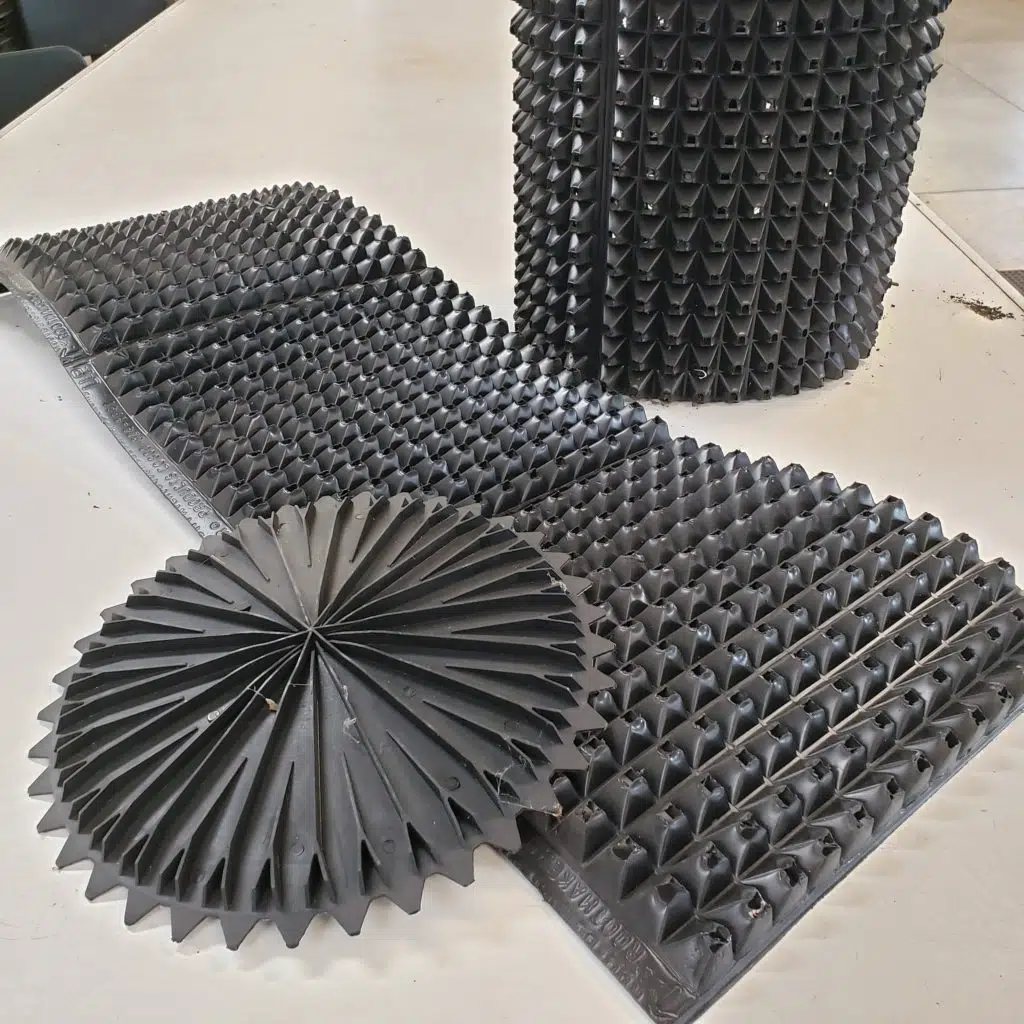
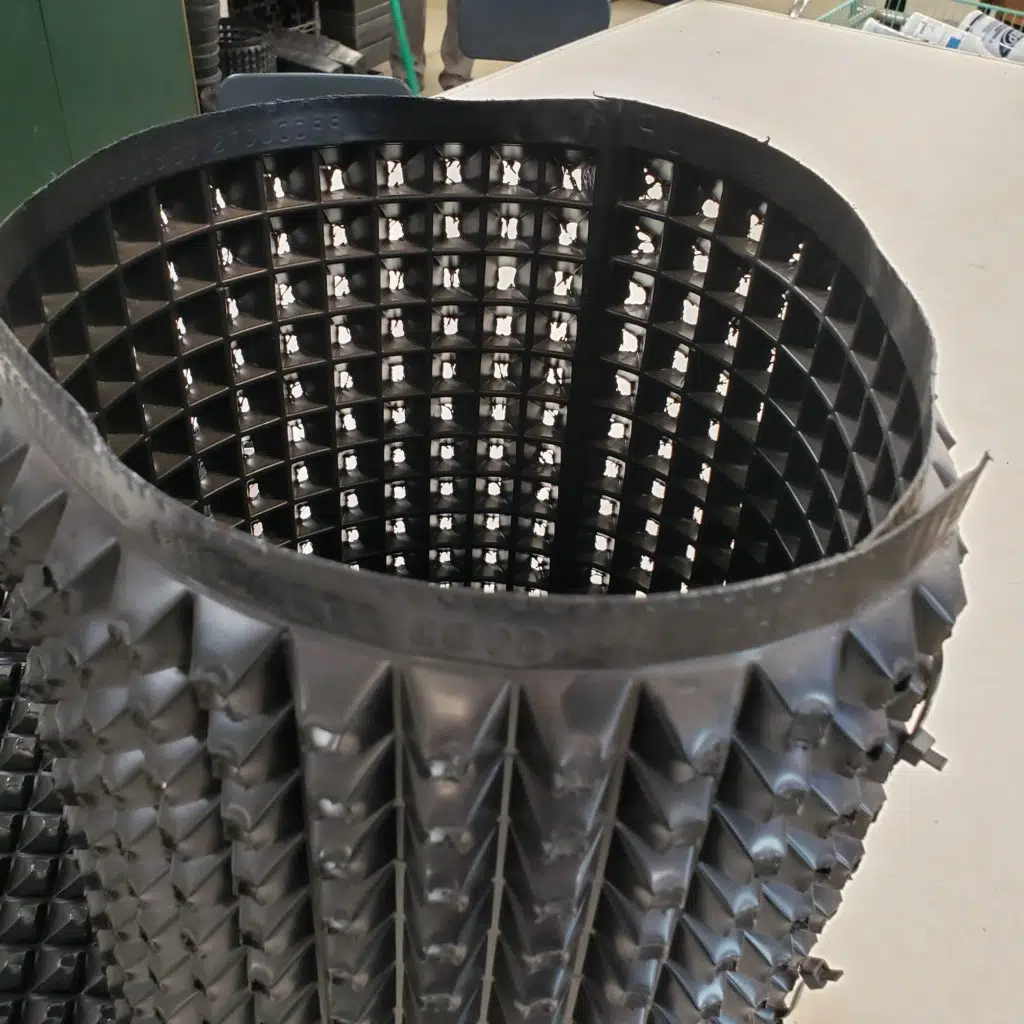
Rootbuilder pots (Figures 4 & 5) are also made by Rootmaker Company, the difference being that they consist of cones with openings at each of their tips. This is my favorite thus far. The plants that I have pulled out of these pots have had nice fibrous root systems. The unusual thing about this pot is that you have to ‘build’ the pot before you can use it, by wrapping the sides piece around a disc for the bottom and then using a zip-tie to fasten it together. The zip-ties are removed from the pot to facilitate the removal of the plant.
Accelerator pots have ribs that guide the roots to a series of slots cut into the ribbed portion. The ribbing also helps keep a root from circling.
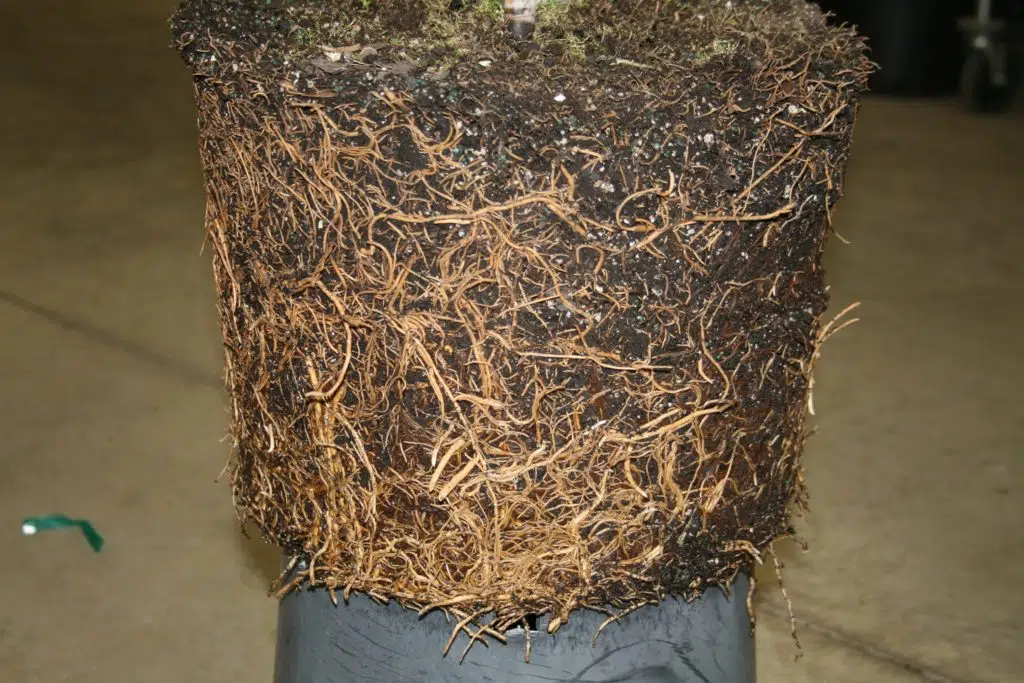

Magnolia tripetala in both a smooth wall pot (Figure 6) and a Rootbuilder pot (Figure 7). In the regular pot, you see a lot of roots around the outer edge of the pot with some that are circling. In the Rootbuilder pot, you don’t see the circling roots and you have a nice fibrous root system. Once the tree is planted, there are a lot of root tips ready to expand into the surrounding soil and support the tree.

Greg Wright
Nursery Manager












